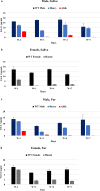Generation of Fel d 1 chain 2 genome-edited cats by CRISPR-Cas9 system
- PMID: 38424152
- PMCID: PMC10904870
- DOI: 10.1038/s41598-024-55464-0
Generation of Fel d 1 chain 2 genome-edited cats by CRISPR-Cas9 system
Abstract
Allergens from domestic cats (Felis catus) cause allergy-related health problems worldwide. Fel d 1 is a major allergen that causes severe allergic reactions in humans, including rhinitis, conjunctivitis, and life-threatening asthma. Therefore, patients with cat allergies anticipate hypoallergenic cats. We successfully generated Fel d 1 chain 2 (CH2) genome-edited cats using the CRISPR-Cas9 system in this study. T7 endonuclease 1 assay and Sanger sequencing were used to confirm the mutation in CH2 genome-edited cats. Fel d 1 level in CH2 genome-edited cats were assessed by enzyme-linked immunosorbent assay (ELISA). Remarkably, ELISA showed that the level of Fel d 1 in the CH2 homozygous genome-edited cat (Name: Alsik) was extremely low compared with that in wild type domestic cats and could be hypoallergenic cats. Additionally, we successfully cloned the CH2 homozygous genome-edited cat using cytoplasm injection clone technology. The cloned CH2 homozygous genome-edited cat was verified using microsatellite analysis. Creating hypoallergenic cats using the CRISPR-Cas9 system is a significant step forward because these cats can safely approach allergic patients.
Keywords: Allergen; CH2; CRISPR-Cas9; Fel d 1; Genome-edited cats; Hypoallergenic cats.
© 2024. The Author(s).
Conflict of interest statement
The authors declare no competing interests.
Figures



Similar articles
-
Targeted Gene Knock-Out of Fel d1 in Fetal Fibroblasts Using CRISPR-Cas9: Implications for Cat Allergies.Animals (Basel). 2025 Mar 24;15(7):927. doi: 10.3390/ani15070927. Animals (Basel). 2025. PMID: 40218321 Free PMC article.
-
Evolutionary Biology and Gene Editing of Cat Allergen, Fel d 1.CRISPR J. 2022 Apr;5(2):213-223. doi: 10.1089/crispr.2021.0101. Epub 2022 Mar 28. CRISPR J. 2022. PMID: 35343817
-
Genetic diversity of the major cat allergen, Fel d 1.PNAS Nexus. 2024 Nov 26;3(11):pgae447. doi: 10.1093/pnasnexus/pgae447. eCollection 2024 Nov. PNAS Nexus. 2024. PMID: 39600803 Free PMC article.
-
The major cat allergen, Fel d 1, in diagnosis and therapy.Int Arch Allergy Immunol. 2010;151(4):265-74. doi: 10.1159/000250435. Epub 2009 Oct 22. Int Arch Allergy Immunol. 2010. PMID: 19844127 Review.
-
Focus on cat allergen (Fel d 1): immunological and aerodynamic characteristics, modality of airway sensitization and avoidance strategies.Int Arch Allergy Immunol. 2003 Sep;132(1):1-12. doi: 10.1159/000073259. Int Arch Allergy Immunol. 2003. PMID: 14555853 Review.
Cited by
-
Allergies to Allergens from Cats and Dogs: A Review and Update on Sources, Pathogenesis, and Strategies.Int J Mol Sci. 2024 Sep 29;25(19):10520. doi: 10.3390/ijms251910520. Int J Mol Sci. 2024. PMID: 39408849 Free PMC article. Review.
-
Furry Animal Allergy: Lipocalins, Serum Albumins, and Secretoglobins-Cross-Reactivity, Diagnosis, and Management Strategies.Clin Rev Allergy Immunol. 2025 Jul 30;68(1):75. doi: 10.1007/s12016-025-09086-7. Clin Rev Allergy Immunol. 2025. PMID: 40739451 Free PMC article. Review.
-
Targeted Gene Knock-Out of Fel d1 in Fetal Fibroblasts Using CRISPR-Cas9: Implications for Cat Allergies.Animals (Basel). 2025 Mar 24;15(7):927. doi: 10.3390/ani15070927. Animals (Basel). 2025. PMID: 40218321 Free PMC article.
References
-
- Pongrácz P, Szapu JS. The socio-cognitive relationship between cats and humans – Companion cats (Felis catus) as their owners see them. Appl. Anim. Behav. Sci. 2018;207:57–66. doi: 10.1016/j.applanim.2018.07.004. - DOI
MeSH terms
Substances
LinkOut - more resources
Full Text Sources
Medical
Research Materials
Miscellaneous

